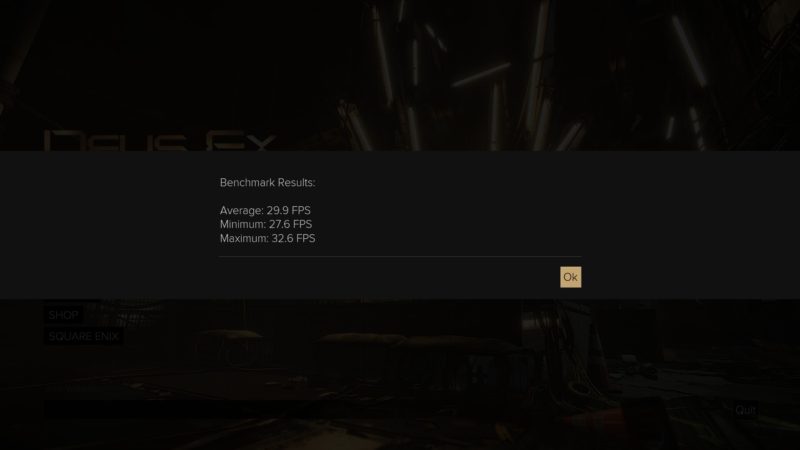Deus Ex: Mankind Divided Performance Analysis
John Williamson / 8 years ago
Test Systems and Procedures
Here is the test system used for all graphics card reviews and performance analysis articles:
Test System
- Motherboard – Gigabyte X99-Gaming G1 WiFi LGA 2011-3 Motherboard
- Processor – Intel Core i7 5820K at Stock 3.3GHz
- RAM – 16GB (4 X 4GB) Crucial Ballistix Sport DDR4 2400MHz
- CPU Cooler – Thermaltake Water 3.0 with Gelid GC-Extreme
- Power Supply – BeQuiet Dark Power Pro 11 1200w
- Main Storage Drive – Crucial M550 512GB
- Chassis – Lian Li T80 Test Bench
- Displays – AOC U2868PQU 4K
- Operating System – Windows 10 Pro 64 Bit
Driver Details
The latest drivers are always used at the time of testing, but please note reviews and performance articles undergo a scheduling process. This means a new driver could be released on the day of publication. However, this is unavoidable and disclosing the driver versions used is the most transparent way of informing the reader about current performance levels.
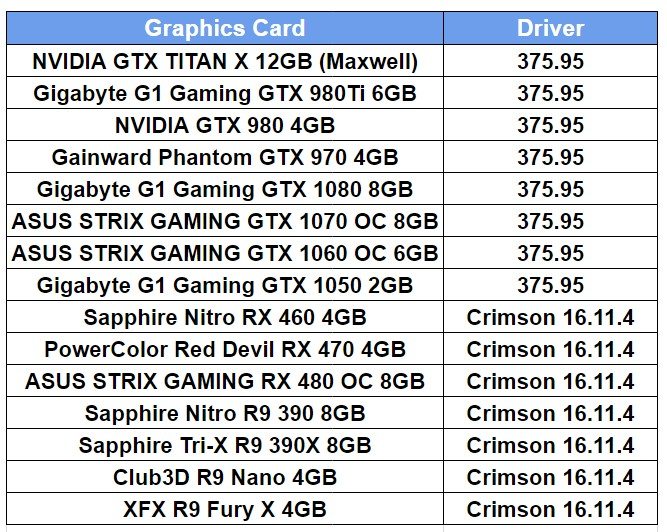
Games Used
- Deus Ex: Mankind Divided
Game Version
It can be quite challenging for any performance analysis to remain completely accurate due to driver enhancements and improved optimisation through post-release patches. Therefore, it’s imperative to provide readers with this information so they can easily determine how the results might differ in a few months time. As you can see, the file version at the time of testing was 1.11.616.0.

Test Procedure
It’s possible to switch between different presets and tweak other options via a launch menu before loading the game. On the first page, you can enable or disable Fullscreen, Exclusive Fullscreen and DirectX 12. Additionally, the menu supports a large array of resolutions sporting different aspect ratios. During the benchmarking process, I decided to switch off MSAA because it is a major resource hog and dramatically inhibits the performance. Therefore, I wouldn’t recommend using this feature unless you own some pretty high-end hardware. On another note, the options menu has V-Sync on/off commands and support for Stereoscopic 3D.
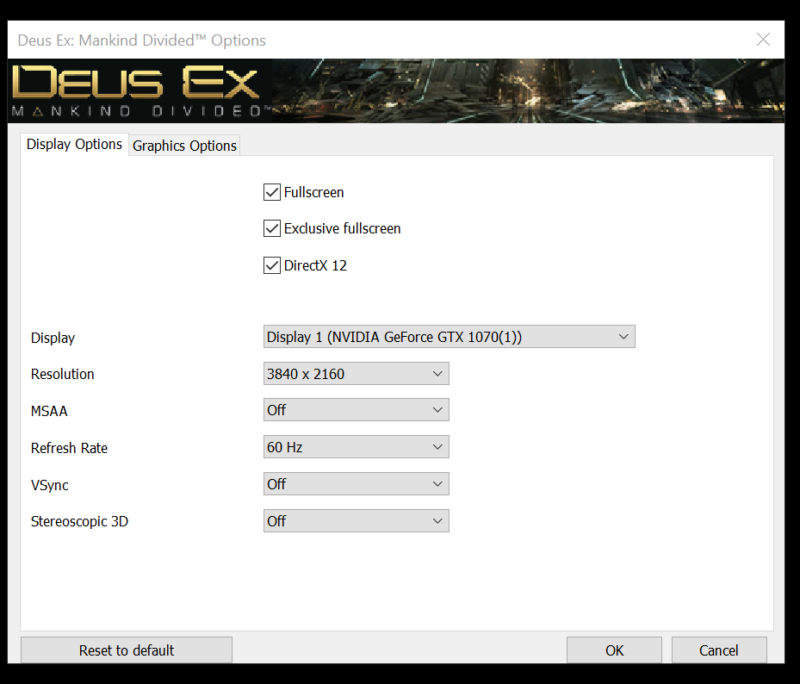
Here we can see there is an assortment of options to modify including Texture Quality, Shadow Quality, Ambient Occlusion, Depth of Field, Volumetric Lighting and other complex effects. Unless you’re comfortable with benchmarking for long periods, I would recommend selecting the most appropriate preset and keeping the default configuration. The Ultra preset requires graphics cards with at least 4GB of memory and sets the Texture Filtering to 8x Anisotropic. This can be increased to x16 which seems a little bizarre since the Ultra preset is meant to be the most demanding.
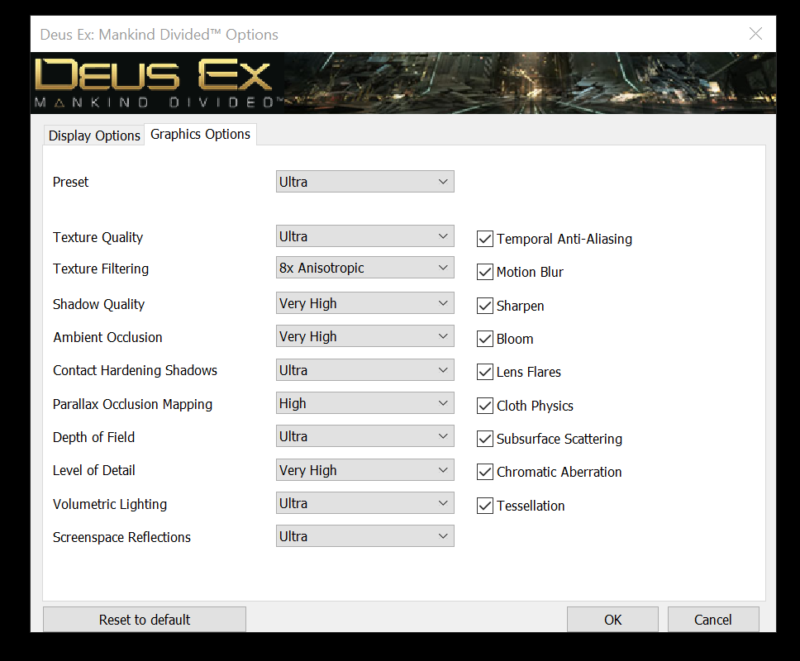
If you suddenly decide the current setup is overly taxing, it’s easy to enough to change the visual details in-game. Apart from a few extra settings like the Field of View slider, the functionality remains the same as the game’s launcher. I’m quite fond of the stylish presentation and description detailing the effect of each setting which makes the menu appear less daunting.
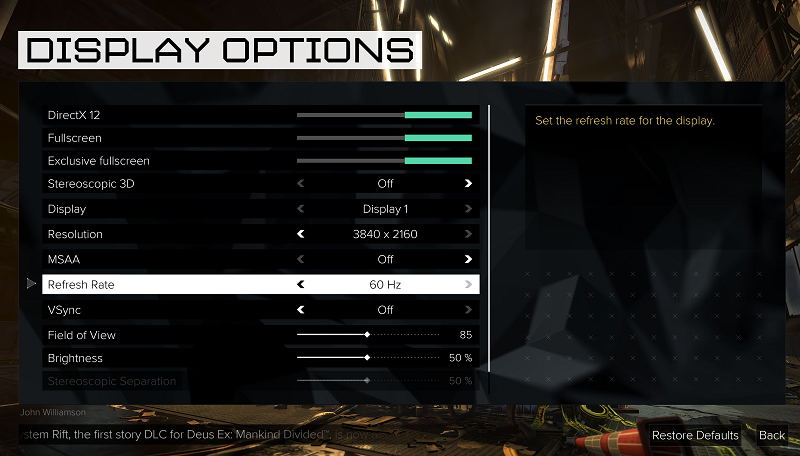
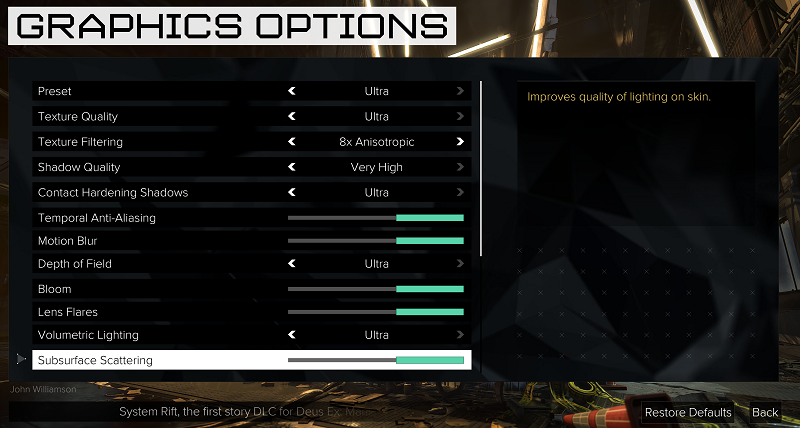
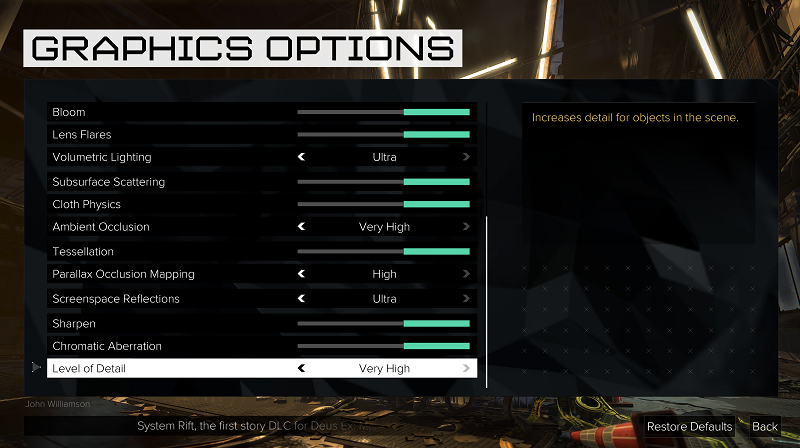
Deus Ex: Mankind Divided has an integrated benchmarking utility which runs through a number of scenes and displays the performance figures. Unlike some games which only outline the average frame rate, the minimum and maximum are also included. According to my own testing, the benchmark tool is extremely accurate and the variation between runs remained within 0.1-2%.
